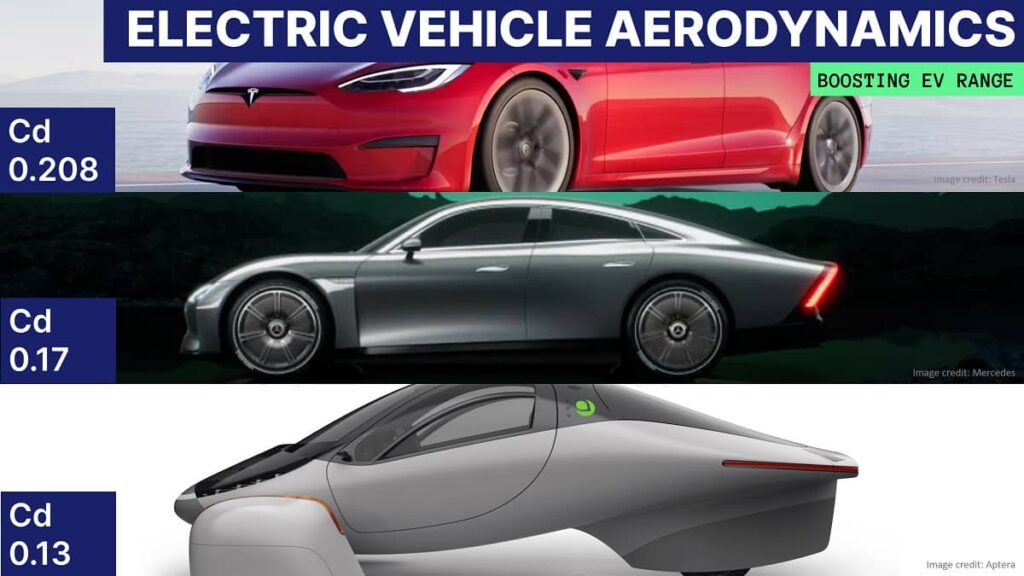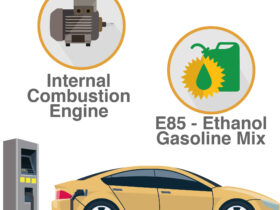Electric car aerodynamics play a crucial role in maximizing efficiency and range, contributing significantly to the overall performance and appeal of these eco-friendly vehicles. Aerodynamics refers to the way air flows around a vehicle as it moves, and for electric cars, achieving optimal aerodynamic design is paramount to reducing drag, enhancing range, and ultimately improving energy efficiency.

One of the key aspects of electric car aerodynamics is the effort to minimize drag coefficient, often referred to as Cd. The drag coefficient represents how smoothly a vehicle moves through the air, with lower numbers indicating better aerodynamic efficiency. Electric car manufacturers invest heavily in shaping and refining their vehicle designs to achieve lower drag coefficients, which can directly impact energy consumption and range.
Achieving an optimal drag coefficient is crucial for electric cars because it directly affects their driving range. By reducing aerodynamic drag, electric vehicles can travel farther on a single charge, making them more practical and appealing to consumers concerned with range anxiety. For example, Tesla’s Model S boasts a low drag coefficient of 0.23, contributing to its impressive range capabilities.
Another important aspect of electric car aerodynamics is the integration of features like smooth underbody panels, active grille shutters, and aerodynamically optimized wheels. These elements work together to streamline airflow around the vehicle, minimizing turbulence and reducing drag. By paying attention to these details, automakers can enhance both the efficiency and performance of electric cars.
Moreover, advancements in materials and manufacturing techniques allow for the development of lighter and more aerodynamic components, further improving overall vehicle efficiency. Lightweight materials such as carbon fiber and aluminum are used strategically in electric car construction to reduce weight and enhance aerodynamic performance without compromising safety or structural integrity.
The role of aerodynamics in electric cars extends beyond efficiency and range. It also contributes to the vehicle’s overall driving dynamics and stability at higher speeds. A well-designed aerodynamic profile not only reduces drag but also improves handling and reduces wind noise, enhancing the overall driving experience for electric car owners.
In the context of sustainability, improving electric car aerodynamics also aligns with reducing environmental impact. By minimizing energy losses due to aerodynamic drag, electric vehicles can operate more efficiently, requiring less energy from charging sources powered by fossil fuels. This efficiency gain contributes to lowering greenhouse gas emissions associated with electric car use, further supporting the transition to cleaner transportation options.
The continuous evolution of electric car aerodynamics reflects ongoing research and innovation within the automotive industry. As electric vehicle adoption continues to grow, automakers are likely to further refine aerodynamic designs to meet consumer expectations for longer range, improved efficiency, and enhanced driving dynamics.
In conclusion, electric car aerodynamics play a pivotal role in shaping the performance, efficiency, and environmental impact of these innovative vehicles. By focusing on reducing drag coefficient and optimizing airflow, automakers can enhance range, improve energy efficiency, and deliver a more satisfying driving experience. As technology advances and design strategies evolve, electric cars are poised to achieve even greater aerodynamic efficiency, reinforcing their position as a sustainable and viable alternative to traditional internal combustion engine vehicles.


















Leave a Reply